Recent Articles
Popular Makes
Body Types
2021 Toyota Highlander vs. 2021 Hyundai Palisade
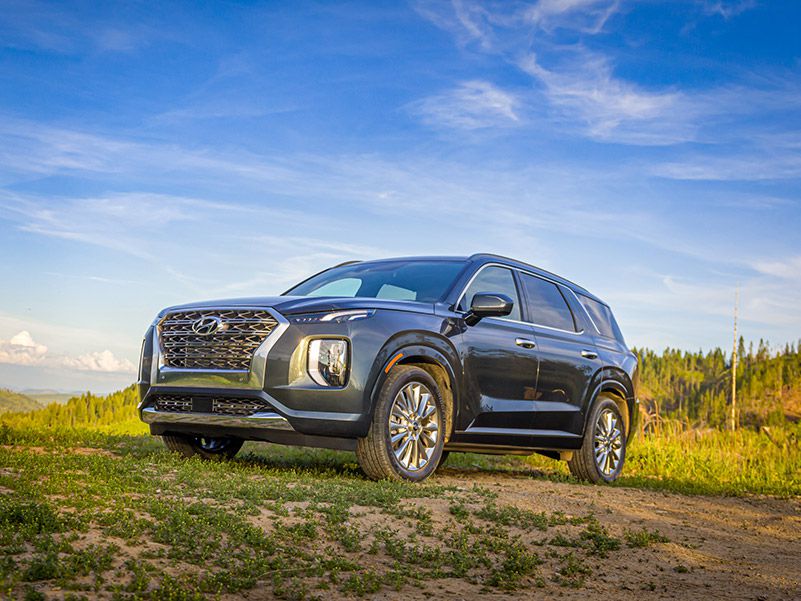
2020 Hyundai Palisade ・ Photo by Hyundai
When Toyota introduced the first Highlander 20 years ago, it had virtually no competition. Today, that’s clearly not the case, as every major automaker offers a mid-size crossover SUV to American families seeking a compelling blend of space, utility, and adventuring capability.
Hyundai actually bookends the Highlander with the smaller five-passenger Santa Fe and larger eight-passenger Palisade. A new model in 2020, the Palisade is Hyundai’s third attempt at building a popular family-size SUV, and it appears the automaker has gotten the recipe right this time around. Toyota, however, isn’t sitting still. Last year, it redesigned the Highlander and made its hybrid version much more fuel-efficient. Are Toyota’s changes compelling enough to ward off the competition from Hyundai? Here’s our in-depth look at the 2021 Toyota Highlander vs. the 2021 Hyundai Palisade.
Styling and Design
Neither of these SUVs is conventionally attractive, each resorting to bold design elements to capture attention. Toyota’s latest Highlander is overwrought from stem to stern, with an angry visage, exaggerated body lines, and a mixture of cues culled from the Camry, RAV4, and Lexus lineups. The Palisade, once you get past its unusual face with stacked lighting elements, looks more like a luxury suv, recalling the Cadillac Escalade in several ways and especially in higher trim levels.
Open the doors, and the Hyundai Palisade’s clean, contemporary, and upscale appearance continues. Especially in higher trim levels, the attention to design detail and quality of materials are excellent. Top-trim versions of the Toyota Highlander are quite nice inside, too, but there is more visual clutter in this SUV, and it doesn’t look as high-tech even if it boasts a bigger available touchscreen display.
Hyundai Palisade
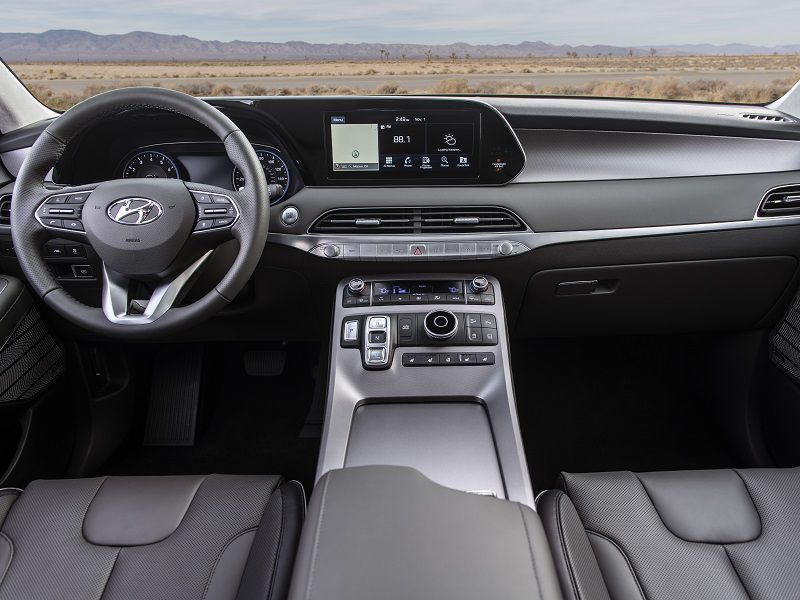
Photo by Hyundai
Comfort and Cargo
Both of these SUVs can carry eight passengers in all but the top trim levels, where captain’s chairs are standard. However, it is the Hyundai Palisade that does this best. In almost every measurement, the Palisade offers more headroom, legroom, and cargo space than does the Highlander. Toyota’s error is with regard to its third-row seat. Compared to most three-row SUVs, it is undeniably cramped, and even children might complain — especially if you seat them three across.
Most likely, Highlander buyers will leave the rearmost seat folded down most of the time in order to take advantage of the generous 48.4 cubic feet of cargo space behind the second-row seat. Hyundai offers 45.8 cubic feet of volume behind the Palisade’s second row. The maximum measurements are 84.3 cubic feet for the Highlander and 86.4 cubic feet for the Palisade.
Hyundai Palisade
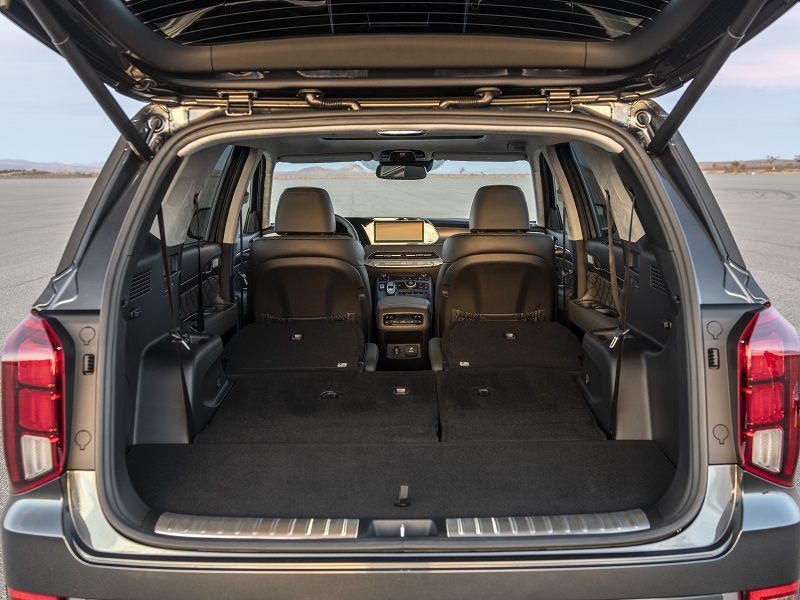
Photo by Hyundai
Infotainment System
Standard equipment for both of these SUVs includes an 8-inch touchscreen infotainment system with Apple CarPlay and Android Auto. Toyota also includes satellite radio, Amazon Alexa integration, and connected services with a free trial period of up to a year. Meanwhile, the Hyundai has a standard rear-seat quiet mode perfect for when children are sleeping in the back.
Upgrades include a 10.25-inch display for the Hyundai and a 12.3-inch display for the Toyota. With the larger screen, the Palisade supports pairing two smartphones to the Bluetooth at the same time and adds three free years of Blue Link connected services and a navigation system. The Hyundai also comes with a terrific Harman Kardon premium sound system, but there is no Wi-Fi hotspot. Toyota offers Wi-Fi on every Highlander, and navigation is available for most trims regardless of screen size. An exclusive with the larger 12.3-inch display, a thumping 1,200-watt JBL premium audio system blasts sound from 11 speakers. Thanks to its generous list of standard features and larger screen size, the Highlander narrowly takes this category.
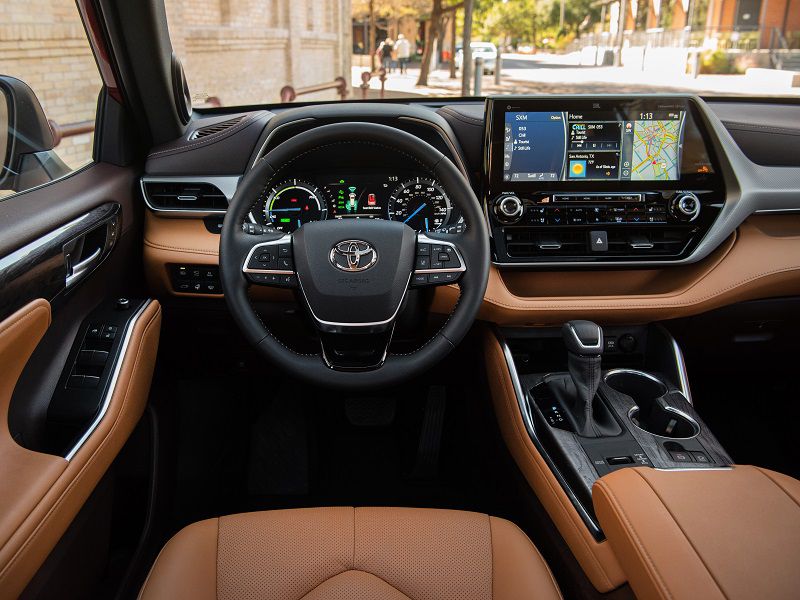
Photo by Toyota
Safety and Technology
Both of these SUVs earned the Insurance Institute for Highway Safety’s Top Safety Pick rating for the 2020 calendar year. That means choosing one for safety boils down to standard and available equipment. Every version of the Highlander includes a rear-seat reminder system, a free year of Safety Connect service with automatic collision notification, and Toyota Safety Sense, a package of useful driving assistance and collision avoidance technologies.
Hyundai doesn’t match Toyota feature for feature, but as you consider higher trim levels the automaker sweetens the pot with three free years of Blue Link with automatic collision notification, Highway Drive Assist technology, and an ultrasonic rear occupant monitor that can detect movement for up to 24 hours. Hyundai also offers a Safe Exit Assist function for the Palisade, as well as a camera-based blind-view monitoring system that supplements the blind-spot warning technology. Mainly thanks to its ultrasonic rear seat monitoring system, the Hyundai takes this category for the win.
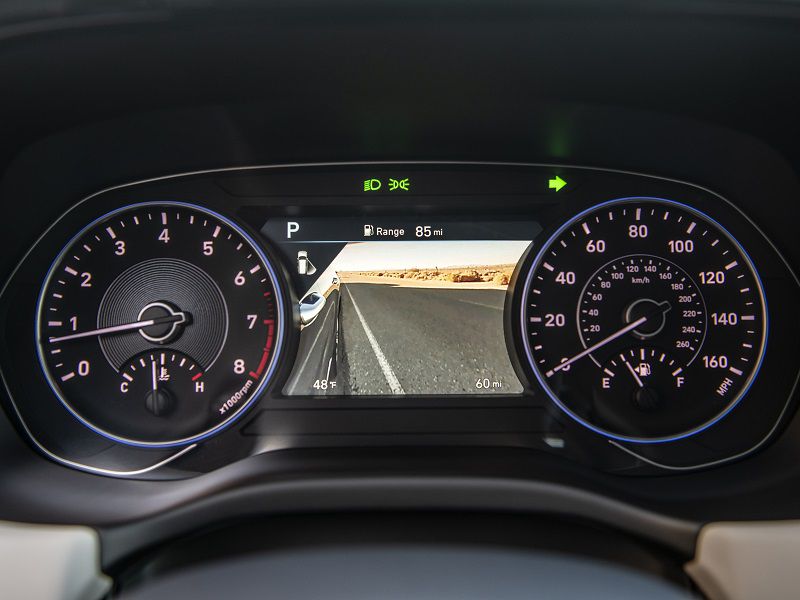
Photo by Hyundai
Power and Performance
In terms of power and performance, the Hyundai Palisade and Toyota Highlander are equals with a couple of exceptions, and both are rated to tow up to 5,000 pounds. Every 2021 Palisade comes with a 291-horsepower 3.8-liter V6 engine. It uses an eight-speed automatic transmission to power the front wheels unless you option the SUV with Hyundai’s HTRAC all-wheel-drive system, which actively distributes power between the front and rear wheels.
Toyota equips the 2021 Highlander with a 295-horsepower 3.5-liter V6 engine and an eight-speed automatic transmission. Front-drive is standard, and two different all-wheel-drive systems are available. The more sophisticated of the two equips the Highlander with torque vectoring to give the SUV a more athletic feel. The torque-vectoring all-wheel-drive system is one Highlander strength. The other is the gas-electric powertrain in the Highlander Hybrid. Making 243 horsepower and providing instantaneous electric motor torque, this powertrain offers a great blend of performance and efficiency.
Toyota Highlander
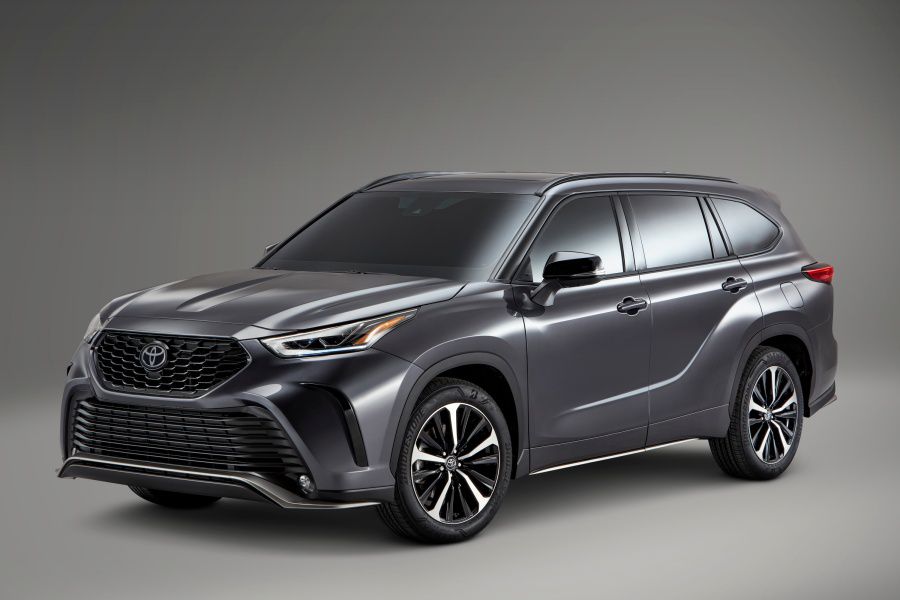
Photo by Toyota
Fuel Economy
Thanks to its available hybrid powertrain, the Toyota Highlander easily wins the fuel economy contest. According to the EPA, the Highlander Hybrid returns up to 36 mpg in combined driving, a figure the Hyundai Palisade cannot touch.
Even comparing EPA ratings on their V6 versions, the Toyota still comes out ahead. With front-wheel drive, the Highlander V6 provides 24 mpg in combined driving. Adding all-wheel drive drops the number a digit to 23 mpg. The Hyundai isn’t far off of this pace, at 22 mpg with front-wheel drive and 21 mpg with all-wheel drive. Still, that’s down nearly 10 percent from the Highlander V6. Clearly, there is no contest on this front. The Toyota is better for maximizing gas mileage, according to official EPA ratings.
Toyota Highlander

Photo by Toyota
Driving Dynamics
When it comes to driving dynamics, the Hyundai Palisade drives more like a traditional SUV while the Toyota Highlander feels more like a traditional car. In the Palisade, you sit up high behind a clean dashboard and a large windshield. The view forward is commanding, and due to surprisingly firm suspension tuning, you get a good feel of the road. The steering feels good in your hands, handling is secure, brake calibration is perfect, and the interior is quiet at speed. If you want a crossover that feels more like an SUV from behind the steering wheel, the Palisade is your choice.
Comparatively, the Highlander feels lower to the ground because it is. Built on a shared Toyota architecture that aims to improve driving dynamics through a lower center of gravity, the Highlander takes corners and curves with confidence. The V6’s transmission can stumble occasionally, though, and some aspects of the Highlander Hybrid’s behavior could use some extra refinement. In any case, these SUVs offer different driving dynamics that will appeal to different kinds of drivers. We’re calling this category a tie.
Tie
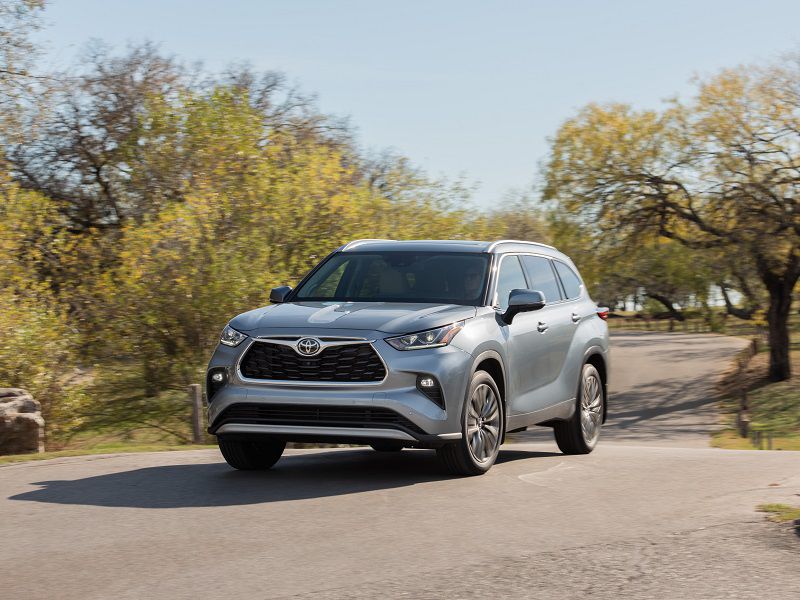
Photo by Toyota
Value
Toyota includes many infotainment and safety systems as standard equipment for the 2021 Highlander, and it throws in free scheduled maintenance for two years or 25,000 miles plus free trial subscriptions to connected services. However, the Toyota still can’t beat the Hyundai when it comes to value, and especially given the Hyundai’s price range.
With the Palisade, Hyundai supplies an industry-leading bumper-to-bumper and powertrain warranty and places no mileage limit on its five-year roadside assistance program. Plus, Palisade owners get free scheduled maintenance for three years, and free Blue Link connected services for three years. Considering that you get all of this peace-of-mind at a lower base price than the Toyota, the Highlander cannot touch the Palisade when it comes to outright value.
Hyundai Palisade
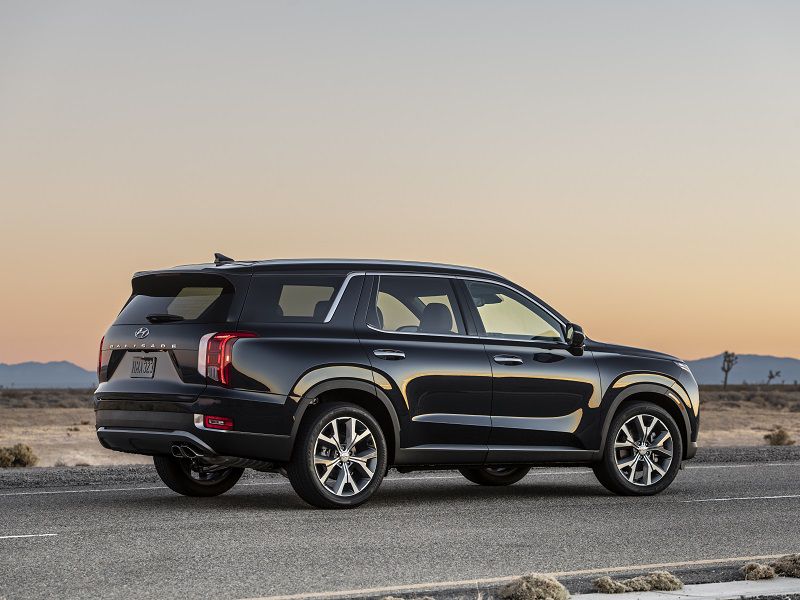
Photo by Hyundai
The Verdict
Hyundai has an immensely likable SUV in the Palisade. High style, strong value, impressive safety ratings and technology, and an accommodating cabin with three rows of legitimately useful seating make it a winner. Plus, this SUV is good to drive.
Toyota, on the other hand, offers more robust standard and available infotainment systems, a thrifty hybrid powertrain, and a car-like driving demeanor. No doubt, the latest Highlander will also continue the Toyota tradition of impeccable reliability coupled to impressive resale value. Between the two, the one you choose has more to do with personal preferences than anything else. We’re partial, however, to the 2021 Hyundai Palisade.
Hyundai Palisade
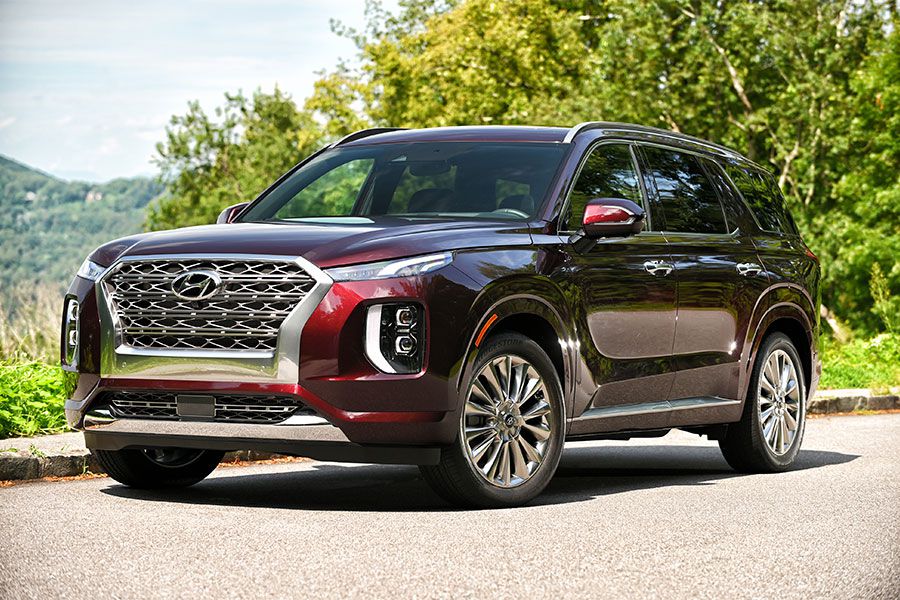
Photo by Hyundai